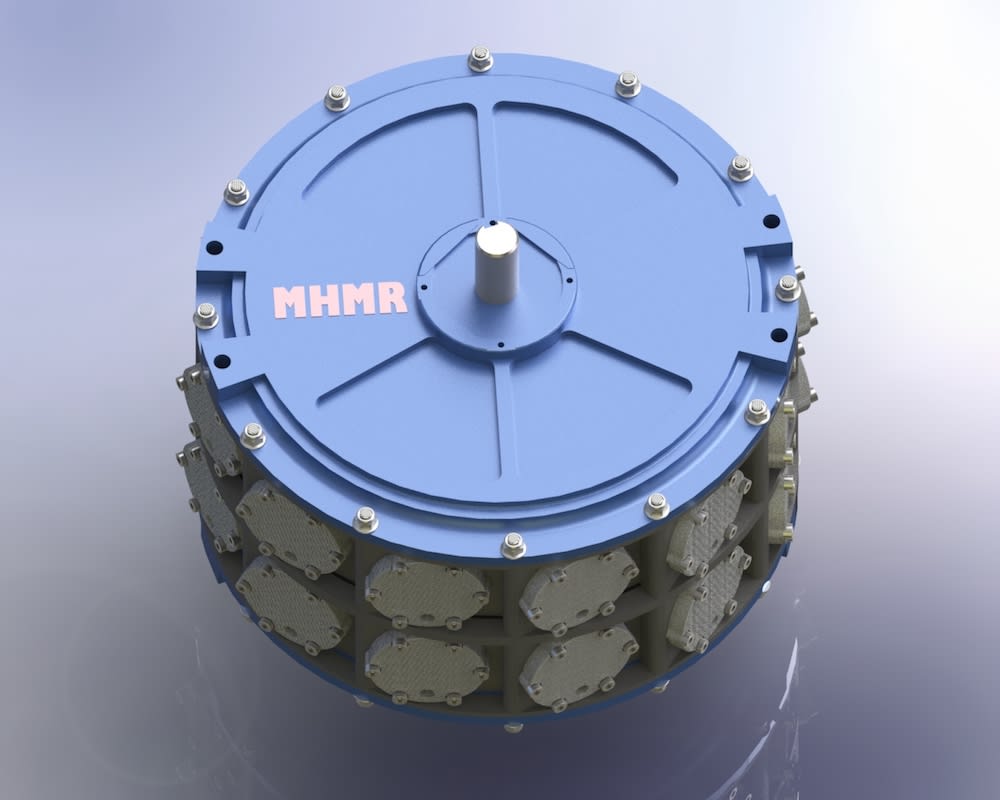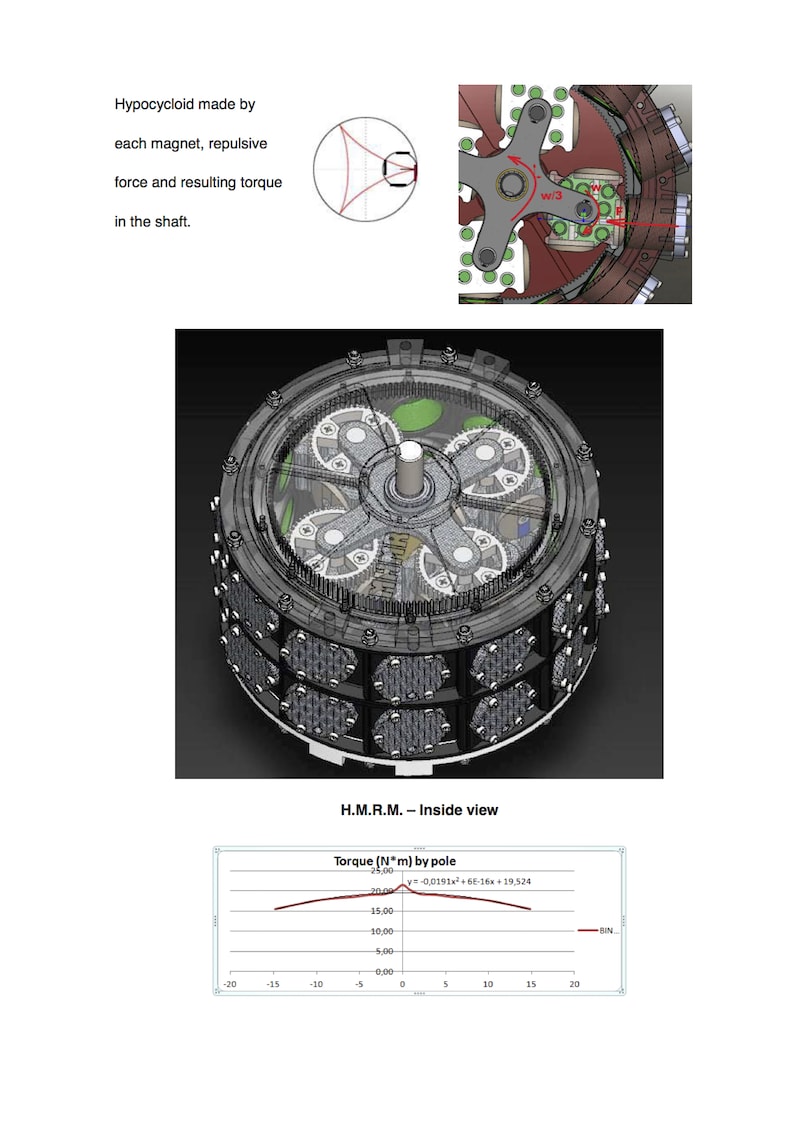H.M.R.M. is an electric motor with a functional approach distinct from the "classic" operation of electric motors, generally based on «magnetic field alignment».
The use of a linear actuation model proved to be an interesting and viable alternative, allowing an efficient use of the repulsive magnetic force generated by neodymium magnets with high magnetization factor and the use of new materials in the electromagnet cores and coils. And, after the preliminary calculations were carried out and verified, it was possible to verify the functional feasibility and efficiency of this engine.
Several geometries were tested for the motor, and the use of a hypocycloidal movement was the one that allowed to obtain better results in the conversion of the repulsive force generated in a useful rotating movement.
In order to obtain a reasonable power, with its application even in a small vehicle, it was necessary to multiply the number of poles of the motor up to 12, acting 4 poles simultaneously, with 3 sets acted in sequence.
The ratio of the diameters between the crown wheel and the inner satellite is 3: 1, which allows each magnet to "tangent" as short as possible to 12 fixed electromagnets on the side body of the engine.
These electromagnets are actuated in groups of 4, offset between them by 90 °, during the interval in which the normal of the neodymium magnet makes an angle between -15 ° and + 15 ° with the normal of the electromagnet.
The action of the electromagnets causes a repulsive force on the magnets of neodymium that give a torque on the satellites, forcing them to rotate. These, as they do not slide over the crown wheel, force the main shaft of the engine to rotate with a 3 times greater torque and 1/3 of the satellite's angular speed, due to the ratio of 1: 3.
The coils are designed to minimize heating and Joule losses by increasing the engine's energy efficiency by using the minimum length of (preferably) aluminum wire coated with carbon nanotubes.
The engine is 'scalable' in size and power and can be built using new materials and alloys - essentially carbon fiber. This, despite increasing production costs, allows an even more drastic reduction in the weight of the engine / kw which may represent a very interesting solution for the aerospace industry, where the 'weight factor' is always decisive.
Like this entry?
-
About the Entrant
- Name:Luis Alves
- Type of entry:individual
- Patent status:none





